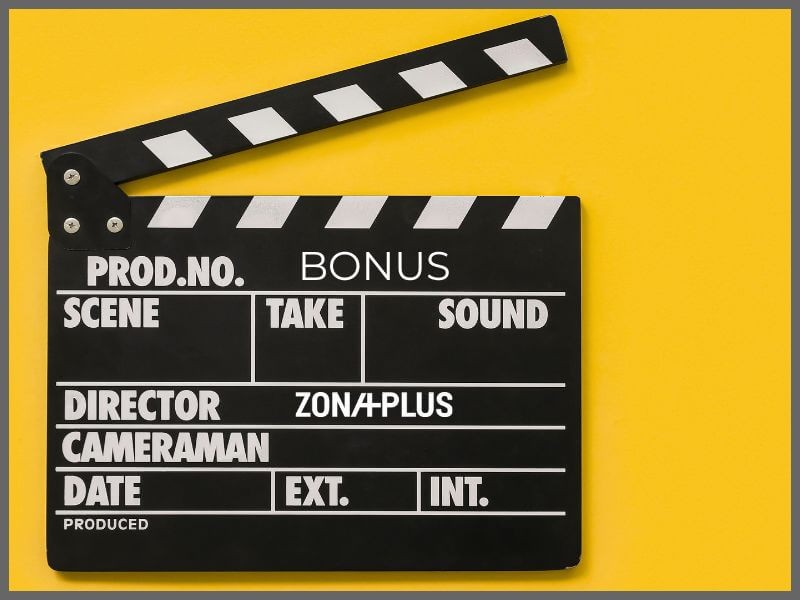
Creating content is one of the most effective ways to increase reach and attract new followers. Sharing that same content with others is a way of expressing identity, connecting with others, and participating in broader conversations or trends.
Why do people share content?
Although specific statistics on why people share content aren’t always available, it’s generally understood that users share content that is:
Every share is an opportunity for your post to reach a new audience and for your profile to gain extra visibility — all without investing in ads.
If you manage social media and want to encourage more shares, these 9 methods will help you create content people want to share.

If you want your content to be remembered, spark a reaction, and encourage sharing, don’t just list information.
People don’t share stats — they share feelings. And stories are what create closeness and turn your brand into something familiar.
Why does it work?
Audiences connect most easily through emotions. When you show the human side of your business — the challenges, the effort, even the small mistakes — you become real. And when someone feels connected to you, they’re more likely to want to share your content.
Example from practice:
Lego has been using customer and fan stories for years through its LEGO Ideas platform, where people propose their own creations and vote on others’. Fans love sharing stories about their designs, process, and success because they’re not just sharing a product — they’re sharing a personal story, passion, and recognition from the community.
How can you apply this?
Before you publish content, ask yourself: “What story can I tell with this?”
Instead of a generic product post, try something like: “When we created this product, we were trying to solve a problem we ourselves face daily. This is how it came to be…”
Tip:
Stories are all around you. Look for them. Tell them.
Instead of a dry post like “here’s our product,” tell the story of the person who came up with it — or the person who uses it.

If you want your audience to be an active participant, not just an observer, involve them in content creation.
User-generated content (UGC) refers to content created by your followers that you share on your social media. That way, your story becomes theirs too.
Why does it work?
When you share content someone else created, that person feels recognized and valued. They’ll want to show others and will likely reshare the post. Plus, content that comes from real people feels more convincing. People are more likely to trust another user’s recommendation than an official ad.
Example from practice:
Starbucks launched a well-known campaign inviting people to decorate their cups, and the best design became the inspiration for the official cup design. Even today, Starbucks uses hashtags like #StarbucksLove to encourage people to share their own photos and experiences.
How can you apply this?
Invite your followers to share a photo of a product they bought from you or a service they used. Create a unique hashtag and encourage them to use it. That way your content spreads further, and your community grows through real people’s stories and experiences.

If you want your audience to share content, tag a friend, or take any other action, you need to ask them directly.
A call-to-action (CTA) is a clear and direct prompt for a specific activity. Instead of assuming people will know what to do, guide them to the step you want.
For example: “Share this post”, “Tag a friend who might find this useful”, “Comment below”.
Why does it work?
People are overwhelmed with content. Often, they’re not sure what to do after viewing something. When you tell them clearly what you expect, you make it easier for them to decide and increase the chances they’ll actually respond.
Example from practice:
IKEA often uses participation prompts in its social media campaigns, such as “Share with us” or “Tag a friend”. This helps engage users and encourages more sharing, while also collecting new ideas and stories.
How can you apply this?
Add a call-to-action at the end of your post caption, in the video text, or directly on the visual. Don’t assume the audience will spontaneously share the content — remind them. But keep the prompt friendly and simple, not pushy or aggressive.

It’s important that your content keeps a unique and recognizable visual style.
Colors, typography, shapes, photos – all these elements make up your brand’s visual identity.
The audience will be able to recognize you at first glance, even before reading the profile name.
Why is this important?
Today we come across hundreds of posts every day, so recognizability is what grabs attention. Attractive and consistently designed content builds trust and increases the chance people will share it, especially on platforms where visuals play a big role, like Instagram.
Example from practice:
Zara Home maintains a consistent visual identity on social media through carefully selected colors, minimalist compositions, and photography style. Each post is part of a broader story, and the audience instantly recognizes it based on visual impression.
How can you apply this?
Define your brand’s visuals: color palette, photo style, fonts, and graphic elements you’ll use in posts. Make sure your content is consistent, but still varied enough to avoid monotony. This way, you’ll build a visual signature that sets you apart and makes you recognizable.

If you want your audience to see value in your content and feel compelled to share it, offer them something useful.
People appreciate information, tips, and instructions they can apply right away or pass on to others.
Why is it effective?
When you publish advice that makes someone’s life easier or solves a problem, they’ll be happy to share it with others. By sharing helpful information, people show they care about their community and that they’re informed.
At the same time, you’re positioning yourself as an expert the audience can turn to for more information or support.
Example from practice:
dm uses its social media to share helpful tips on skincare, health, nutrition, and sustainable living. They publish short instructions and mini-guides, and users often share these posts because they’re practical, clear, and easy to apply.
How can you apply this?
Think about what information your audience is most often searching for. You can turn it into simple instructions, lists, visual guides, or videos. What matters is that the content is clear and adapted to your followers’ everyday lives.

If there’s one type of content that spreads fastest among people, it’s the one that makes them laugh.
People love sharing things that entertain them because humor creates a sense of connection and spreads good vibes.
Why is it effective?
Laughter brings people closer. When you use humor in your communication, your brand feels more approachable and human.
The audience connects more easily with messages that are fun and relaxed. Such content doesn’t feel like pushy advertising, but rather something they want to show others because it made them laugh or they could relate to it.
Example from practice:
Ryanair has become known for its specific communication style, using sarcastic humor, memes, and interactions in the comments. Their content often goes viral precisely because it doesn’t try to be perfect, but fun and relatable to everyday life.
How can you apply this?
Think about what kind of humor suits your brand and your audience. You don’t need to imitate others, but you can find your own way to bring humor into your communication. Sometimes all it takes is a funny video or a casual comment on a current topic.

Viral challenges have become an essential part of communication on social media.
These are activities that users eagerly join, adapt, and share, creating their own versions of the content.
Viral challenges can be a powerful tool for increasing visibility and connecting with your audience.
Why are they effective?
By participating in a challenge, people feel like they’re part of a shared experience. They’re not just sharing content, but also a sense of belonging to a group, movement, or trend. This kind of content travels through networks of friends and acquaintances, spreading the message without the need for extra investment.
Example from practice:
The Ice Bucket Challenge is remembered as a global challenge that combined fun with a humanitarian cause. People recorded videos and raised funds for ALS research. Although many years have passed, this challenge is still mentioned as an example of viral content.
How can you apply this?
Consider whether there’s a popular challenge your brand can join while staying true to its values. If not, create your own. The challenge should be simple, easy to do, and fun – so that as many people as possible will want to try it and share it.

If you want your audience to both view and share your content, make sure it carries a recognizable emotion.
Content that stirs feelings and/or inspires has a better chance of being spread.
Why is it effective?
Emotions connect. When the audience feels emotion through your post, it stops being just information and becomes a personal experience. By sharing such content, people express what they believe in and what matters to them. Emotional connection not only encourages sharing but also builds long-term loyalty.
Example from practice:
With its “Real Beauty” campaign, the Dove brand shared real women’s stories about self-confidence and insecurities, stepping away from standard beauty images. It was this honesty and emotional depth that encouraged the audience to share their messages and talk about them, spreading the idea of positive self-image.
How can you apply this?
Look for stories your audience can see as their own. Maybe it’s a story about a person who uses your product and transforms their everyday life. Maybe it’s the journey your brand has taken to get to where it is today. Don’t be afraid to show real people and real moments.

People want to see what they usually don’t get the chance to. Behind-the-scenes content lets your audience get to know the processes, people, and daily life behind your brand.
This type of content brings authenticity and creates a sense of closeness because you’re showing that real people, effort, and dedication are behind your product or service.
Why is it effective?
People love seeing “the real picture,” not just the final, polished product. Content that shows reality feels genuine, natural, and relaxed. It makes the audience feel part of your story, which strengthens their connection with the brand.
Examples from practice:
Borovo shared photos and videos from its factory in Vukovar on social media, showing the process of making their shoes. This kind of content gave the audience a chance to see how each pair is made, highlighting the value of craftsmanship and tradition.
How can you apply this?
Share photos or short videos showing your workday – from preparing new products to moments from the office or workshop. It doesn’t have to be perfect, just authentic. The audience will appreciate the honesty and feel more connected to your brand because you’re letting them see what’s usually hidden.

Statistics on content sharing on social media say the following:

Behind shareable content is a thoughtful plan, a good understanding of the audience, and a creative idea.
When you combine these elements, you create posts that capture attention and encourage people to pass them on. That’s how your message spreads, your profile becomes more recognizable, and the community around your brand grows stronger.
Look at your content more broadly; not just as information, but as stories, experiences, and emotions. When you create with that goal, your posts cross the boundaries of your own audience and reach new readers, viewers, and followers.
If you want expert support in designing and managing content your audience will gladly share, get in touch with us. We’ll help you build a profile that draws attention and builds a community.
Sign up to our newsletter to regularly receive useful tips and real-life examples that will inspire and guide you in your social media work.